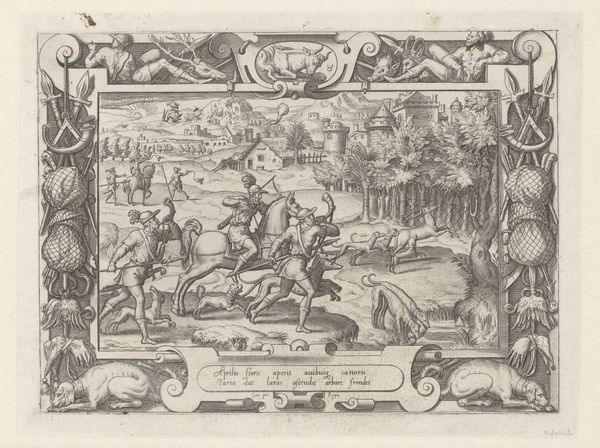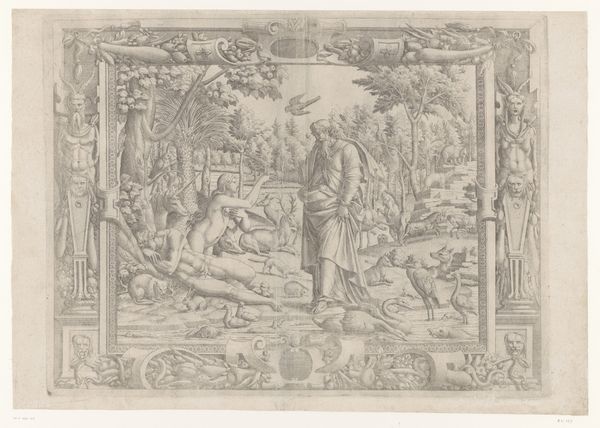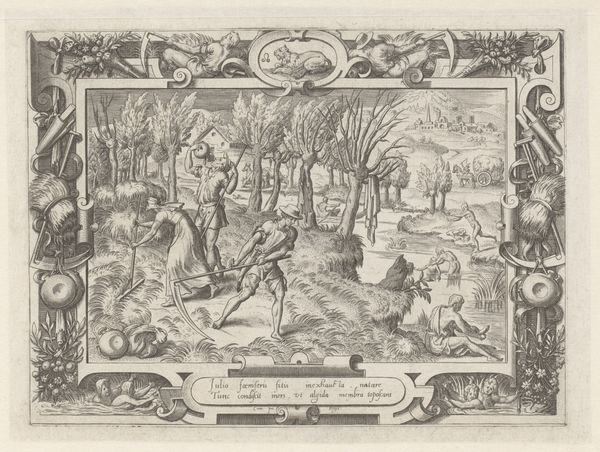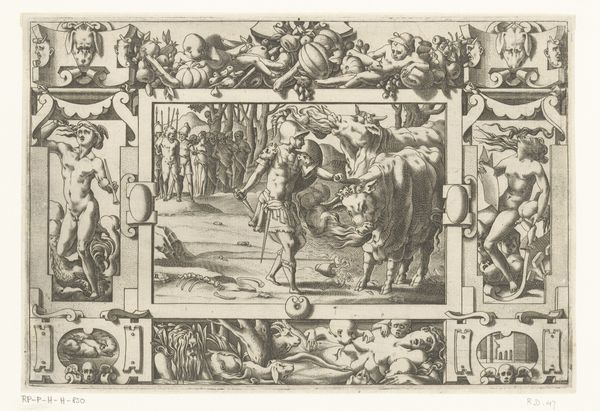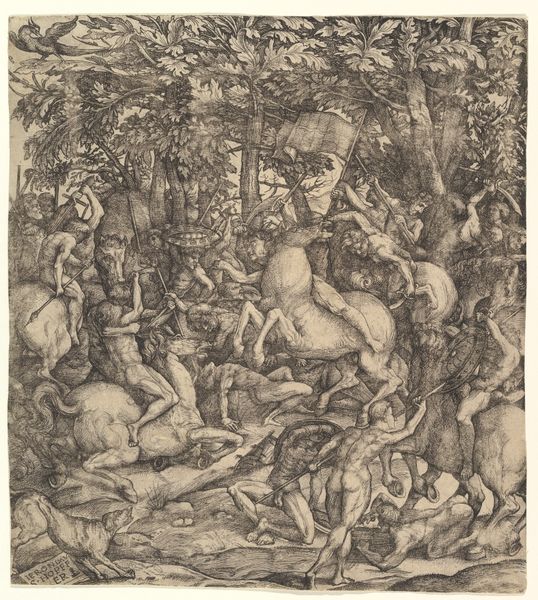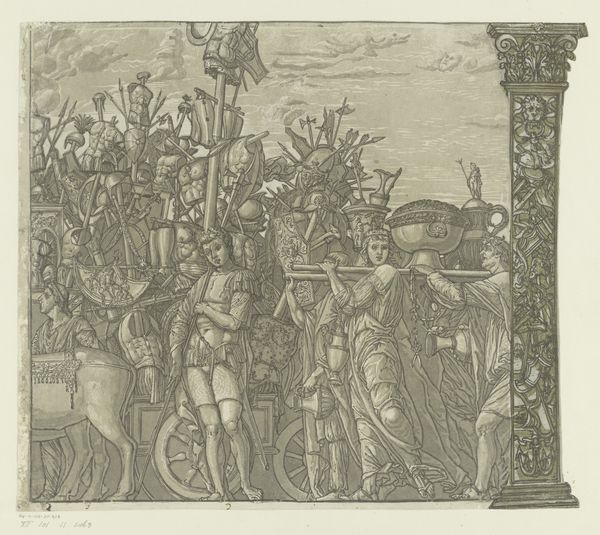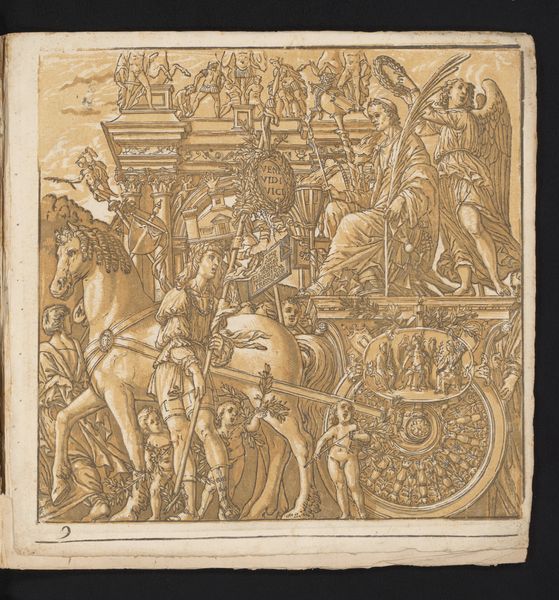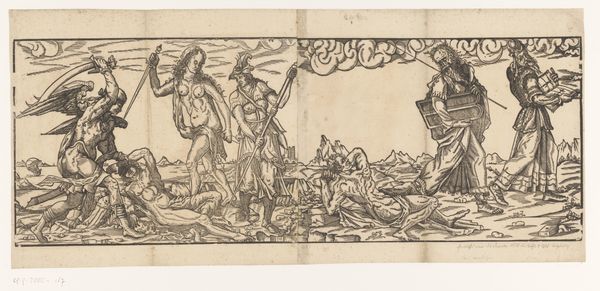
drawing, print
#
drawing
#
allegory
# print
#
landscape
#
figuration
#
genre-painting
#
history-painting
#
italian-renaissance
#
nude
Dimensions: 16 1/2 x 22 3/4 in. (41.9 x 57.8 cm)
Copyright: Public Domain
Curator: Here we have "Temptation in the Garden," a print attributed to Jean Mignon, dating from 1535 to 1555, crafted during the Italian Renaissance. It is now part of the collection at the Metropolitan Museum of Art. Editor: It's visually quite dense, isn’t it? My eye darts all over the place—the ornate border, the figures of Adam and Eve, the variety of animals. There’s a lot going on compositionally. It creates a sense of overwhelming abundance but also of unease with that abundance. Curator: It’s a very layered piece. Mignon wasn't simply depicting the biblical scene. He was participating in a much larger artistic and theological dialogue that was prominent in 16th-century Europe. These allegorical representations of moral choices served a pedagogical function within society, acting as reminders of divine law. The print's availability further distributed these morals into homes and communities. Editor: And how fascinating it is, to frame a concept such as morality itself inside such decadent aesthetic choices. Looking closer, one sees the power dynamics visually encoded. Eve receives the fruit while enthroned above Adam. Is Mignon subverting, perhaps, dominant views of the Fall by framing Eve not simply as a transgressor but as an ascendant figure, maybe even inviting conversations around knowledge and power? Curator: Possibly. The print also fits into broader Renaissance artistic trends. The idealization of the human form, a renewed interest in classical antiquity evident in the figures and ornamental border, which are prevalent throughout Italian art and architecture of that time. I see this as Mignon engaging with these trends while subtly pushing the narrative within acceptable boundaries. Editor: I do wonder though if "acceptable" truly accounts for the subtle commentary. If the animals surrounding them—the deer, the horse, even the sly monkeys observing—are symbols not just of Eden but represent specific virtues and vices, we might find even more levels of coded interpretation within. This isn’t merely a scene, it’s an active arena for moral questioning, isn't it? Curator: Precisely. Considering its place within collections such as the Met highlights its sustained cultural relevance as more than just a historical object, but as a persistent, tangible piece of cultural memory. Editor: Looking at it today prompts crucial discussions regarding gender, choice, and societal judgment, proving it’s an important work that challenges us.
Comments
No comments
Be the first to comment and join the conversation on the ultimate creative platform.
